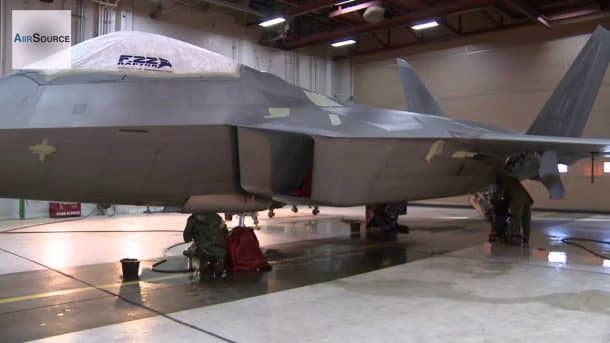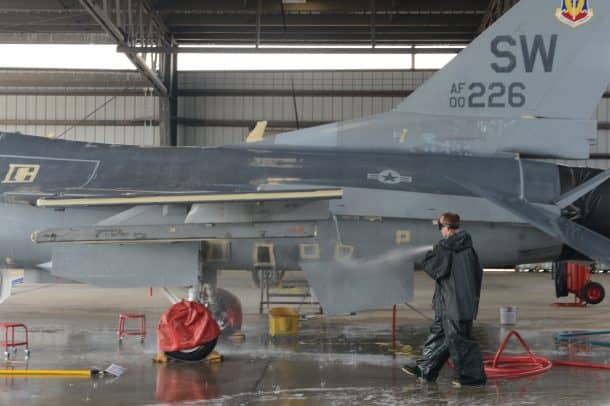An aircraft is an expensive investment, and once you invest in something like that, you keep it sparkly clean and in good condition. It is quite a tedious task to keep a car clean 24 hours a day. It is 100 times worse for a regular airliner, and the trouble multiplies if you have to clean a fighter jet.
You may not even imagine that an airplane would get extremely dirty. However, a man from Norway, Marius Sparby, who worked as a crew chief assistant in the Norwegian Royal Air Force, explains the hell fighter jet cleaners go through.
Power washers have minimized our vehicle washing problems; they work perfectly to wash cars or trucks. However, the super robust aircraft is a tad fragile to be cleaned with a power washer. A person washing a jet like the F16 has to wear a full hazmat-suit with its air source to protect himself from the hazardous cleaning materials. The anti-corrosion fluid used in the cleaning can cause damage to the lungs, and even prove to be carcinogenic. The soap is also strong enough to strip off the skin of your hands quickly.

The cleaning begins with spraying the anti-corrosion fluid on the airplane and then cleaning it with a hose of clean water. Then, it is cleaned with a sponge, large brush, and tiny tools which are the size of a toothbrush. This is required to clean the gun powder residue, fuel residue, engine oil, grease from the landing gear joints, and the worst of all, the super sticky hydraulic fluid. The F16 jet is equipped with M61 A1 Vulcan 20 mm guns that leave a stinky gunk on the sides of the aircraft. Moreover, if the cleaning is done after a few days of live-ammo firing, removing this residue is beyond hell.
The story does not even end there. Once you remove the layer of gunpowder residue just aft of the cockpit, there lies a thick layer of copper-based grease. Thankfully, this layer is easier to remove than the gunpowder layer.

Cleaning for the usual operation is one thing, but once in a while, aircraft goes for a 200-hour inspection that requires the removal of the engine as well. Then, the engine bay requires cleaning as well. After a good time of flying, the engine bay is smothered with aviation fuel, gearbox oil, hydraulic oil, soot, and plenty of other things that you cannot even tell apart; dust, dead bugs, and some other items of the same sort. Everything that involves the hydraulic fluid is undoubtedly a stinky gunk that takes ages and lots of effort to clean. It would be the worst of your nightmares if you had to clean an aircraft with a leak in the hydraulic system.
Below is a video of the cleaning process of F22 Raptor fighter jet.


